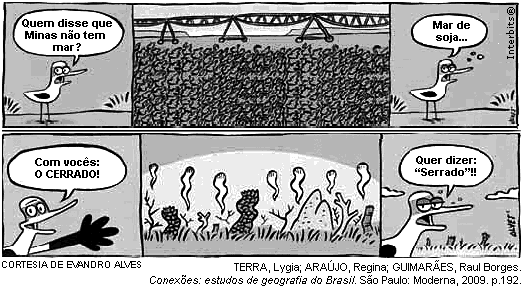01
A lavoura arrozeira na planície costeira da região sul do Brasil comumente sofre perdas elevadas devido a salinização da água de irrigação, que ocasiona prejuízos diretos, como a redução de produção da lavoura. Solos com processo de salinização avançado não são indicados, por exemplo, para o cultivo de arroz. As plantas retiram a água do solo quando as forças de embebição dos tecidos das raízes são superiores às forças com que a água é retida no solo.
WINKEL, H.L.; TSCHIEDEL, M. Cultura do arroz: salinização de solos em cultivo do arroz.
A presença de sais na solução do solo faz com que seja dificultada a absorção de água pelas plantas, o que provoca o fenômeno conhecido por seca fisiológica, caracterizado pelo(a):


